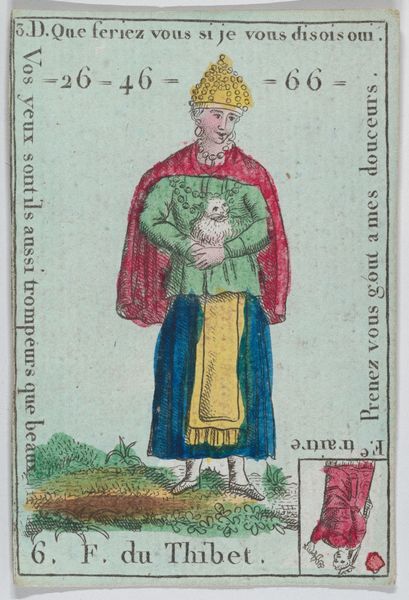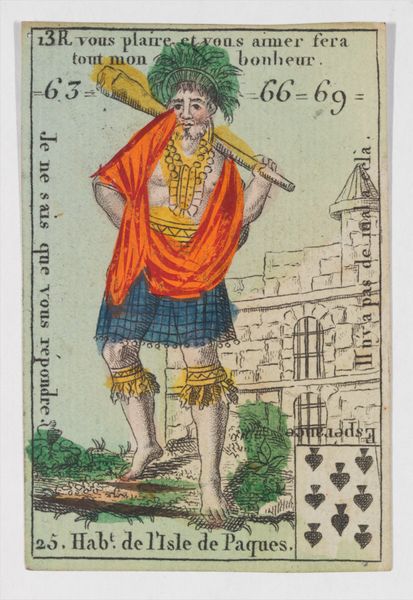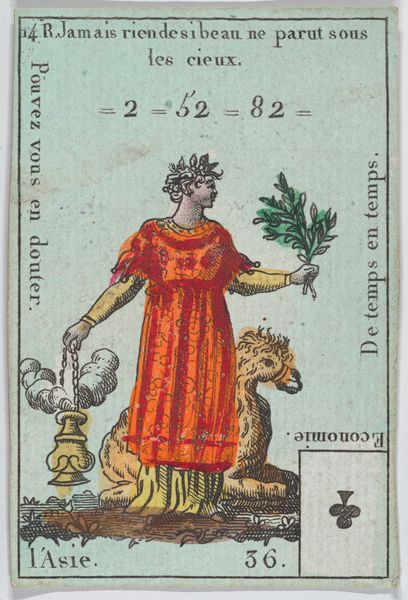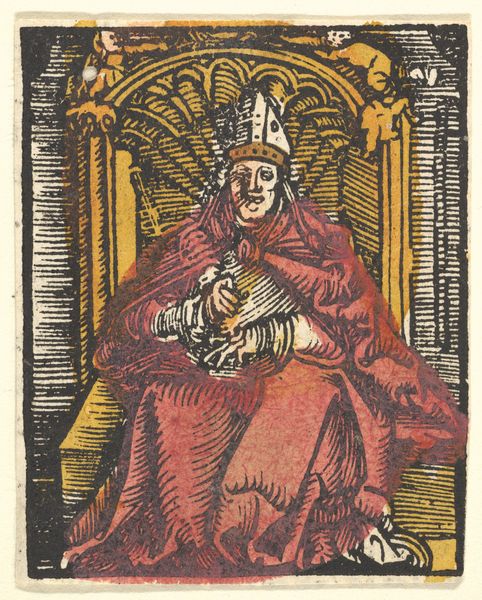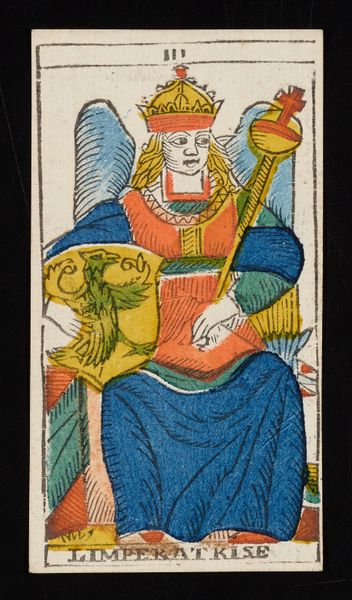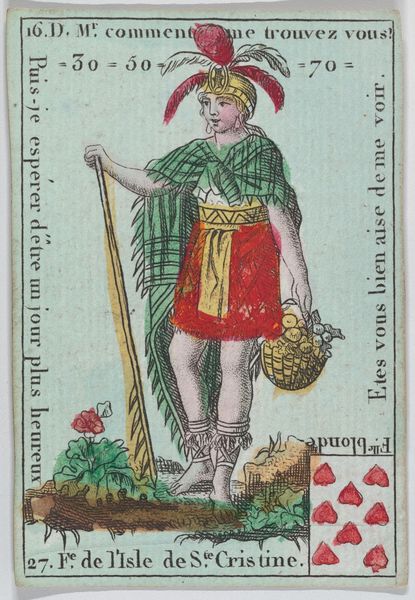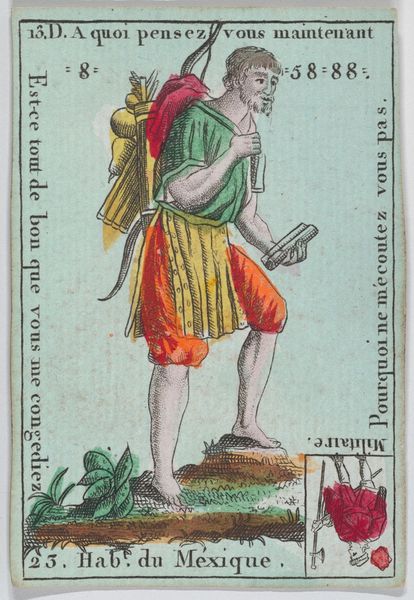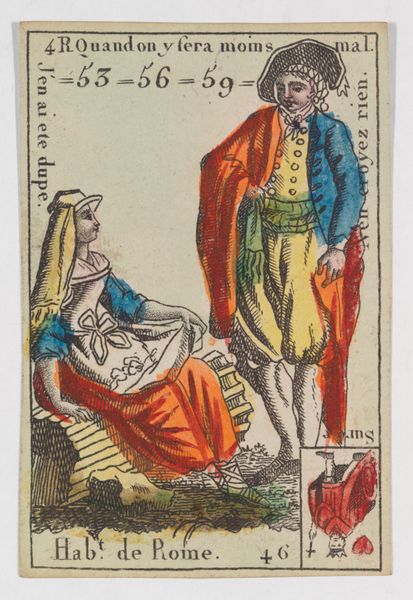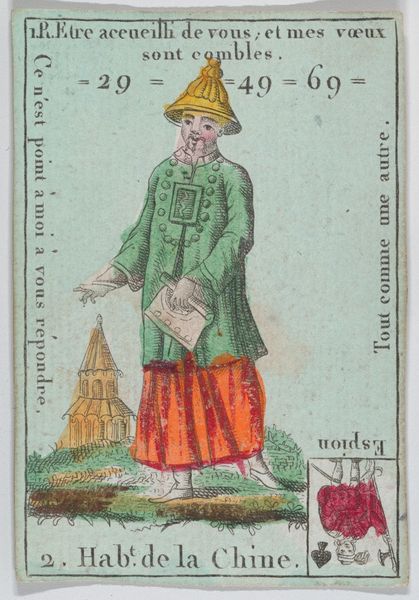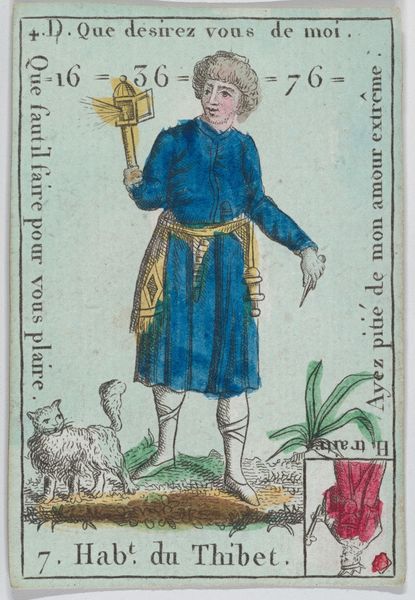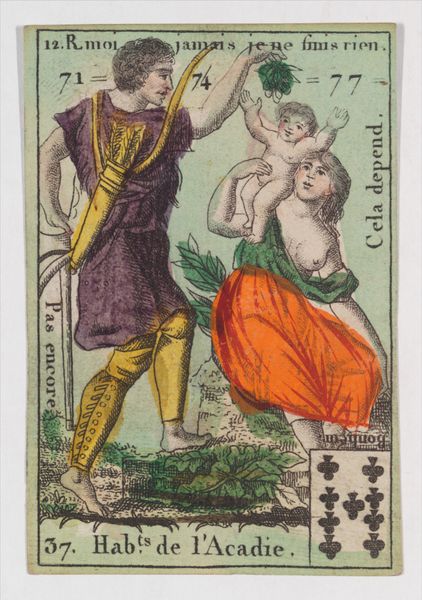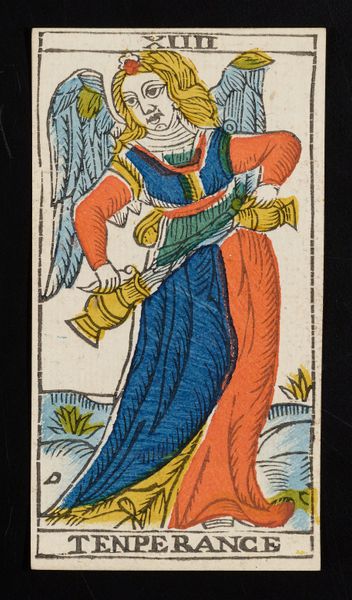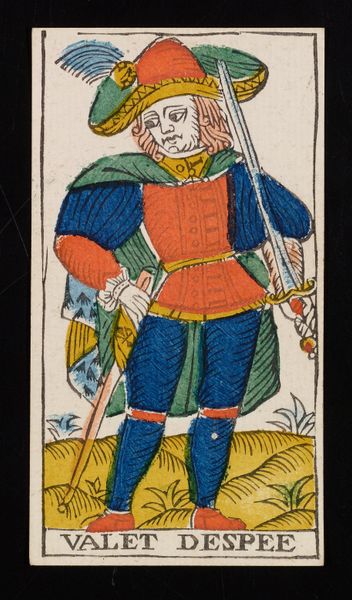
Allegory of Europe, from playing cards "Jeu d'Or" 18th century
0:00
0:00
drawing, graphic-art, print, engraving
#
portrait
#
drawing
#
graphic-art
#
allegory
# print
#
figuration
#
history-painting
#
engraving
Dimensions: 3 3/16 × 2 1/16 in. (8.1 × 5.3 cm)
Copyright: Public Domain
Curator: This artwork is called "Allegory of Europe, from playing cards 'Jeu d'Or,'" dating back to the 18th century, part of the Metropolitan Museum of Art’s collection. It appears to be an engraving, possibly with some hand-coloring. Editor: My initial impression is one of elaborate symbolism. There’s an almost dreamlike quality to the arrangement of figures and objects; it is so dense in signs. It evokes a sense of history being constructed, a deliberate layering of meanings. Curator: It's fascinating to consider the social context of playing cards like these. Beyond entertainment, they served as vehicles for disseminating knowledge and cultural values. The materiality of these cards is important—consider the paper quality, the printing techniques; this points to a certain level of craftsmanship and expense, implying a specific market of consumers. Editor: Yes, I’m drawn to the central figure, who is presumably the allegory of Europe herself. Note the crown, the scepter – obvious symbols of sovereignty. The cornucopia overflowing with fruit and the architectural structure she’s holding - what significance might these have held for the card’s original audience? Curator: Considering Europe's colonial expansion during this period, the horn of plenty could be interpreted as representing the resources extracted from colonized lands, transformed into a commodity for European consumption and pleasure. We must interrogate this further by asking questions of how materials, resources, or even laborers moved. Editor: That makes sense. The text surrounding the figure is interesting too. I see French phrases and numeric codes or riddles around the card. And there's the single heart shape indicating this might be from the suit of Hearts. Clearly this game was intended for sophisticated players! Curator: And this sophistication implies certain class relations. The card indexes not just cultural but economic information and ways of creating symbolic power to make sense of geopolitical circumstances. These cards point to ways in which consumption is an aesthetic and ideological project. Editor: Thinking about the long lives of symbols—a scepter still implies authority today. Perhaps tracing how objects or forms accrue, shed, or twist their associations can illuminate the ever-shifting yet continuous patterns within our cultures. Curator: Precisely, thinking about the way value gets materialized in certain objects over time lets us grasp art making not simply as representation, but as embedded within the material conditions and exchanges of social life. Editor: Looking closer has made me appreciate the image’s intentional, encoded visual vocabulary. Curator: And by understanding its production we reveal the mechanisms through which playing cards played a social and economic role during the enlightenment period.
Comments
No comments
Be the first to comment and join the conversation on the ultimate creative platform.
